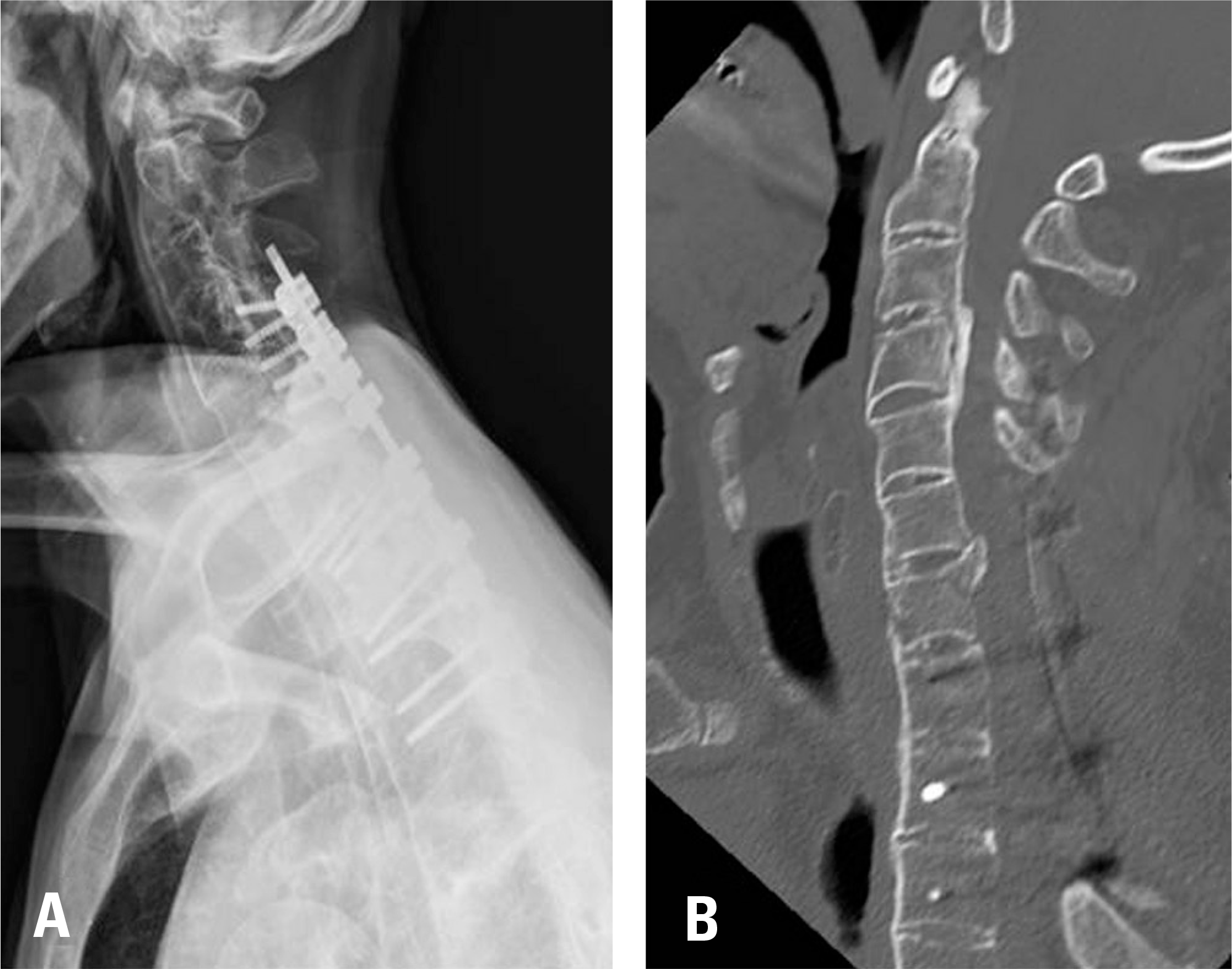Abstract
Objectives
To report a case of epidural hematoma following cervical spinal fracture in a patient with ankylosing spondylitis.
Summary of Literature Review
An early surgical intervention for acute epidural hematoma following cervical spinal fracture led to improvements in the patient's neurological deficits.
Materials and Methods
A 76-year-old male with ankylosing spondylitis presented with neck pain and motor weakness of both upper and lower extremities after falling. He sustained fractures of the C7 body and the spinous processes of C5 and C6. Magnetic resonance imaging showed an extensive epidural hematoma from C7 to T5. The authors performed decompression from C6 to T2, and posterior instrumentation and fusion from C4 to T3.
Go to : 
REFERENCES
1. Qunfeng G, Yidong C, Liang W, et al. Single anterior approach for cervical spine fractures at C5-T1complicating ankylosing spondylitis. Clinical neurology and Neurosurgery. 2016; 147:1–5.
2. Gourav G, Rambir S, Kishan R. Anticoagulant induced spontaneous spinal epidural hematoma, conservative management or surgical intervention A dilemma. J. Acute medicine. 2016; 6:38–42.
3. Mundwiler ML, Siddique K, Dym JM, et al. Complications of the spine in ankylosing spondylitis with a focus on deformity correction. Neurosurgical Focus. 2008; 24:E6.

4. Westerveld LA, Verlaan JJ, Oner FC. Spinal fractures in patients with ankylosing spinal disorders: a systematic review of the literature on treatment, neurological status and Complications. Eur Spine J. 2009; 18:145–56.

5. Vosse D, Feldtkeller E, Erlendsson J, et al. Clinical vertebral fractures in patients with ankylosing spondylitis. J Rheuma-tology. 2004; 31:1981–5.
6. Gartman JJ Jr, Bullitt E, Baker ML. Axis fracture in ankylosing spondylitis: case report. Neurosurgery. 1991; 29:590–4.

7. Duffill J, Sparrow OC, Millar J, et al. Can spontaneous spinal epidural hematoma be managed safely without operation? A report of four cases. J Neurol Neurosurg Psychiatry. 2000; 69:816–9.
8. Chaudhary SB, Hullinger H, Michael JV. Management of Acute Spinal Fractures in Ankylosing Spondylitis. ISRN Rheumatol. 2011 Jun 30.

Go to : 
 | Fig. 1.Initial radiologic findings taken 2 hours after the trauma. (A) A lateral X-ray shows the ankylosed cervical spine. (B) Computed tomography shows fracture of the C7 body. (C, D) On magnetic resonance imaging, a T2-weighted sagittal view and a Dixon view delineate a posterior epidural lesion with an iso to high signal from C7 to T5, corresponding to acute hematoma. |




 PDF
PDF ePub
ePub Citation
Citation Print
Print



 XML Download
XML Download